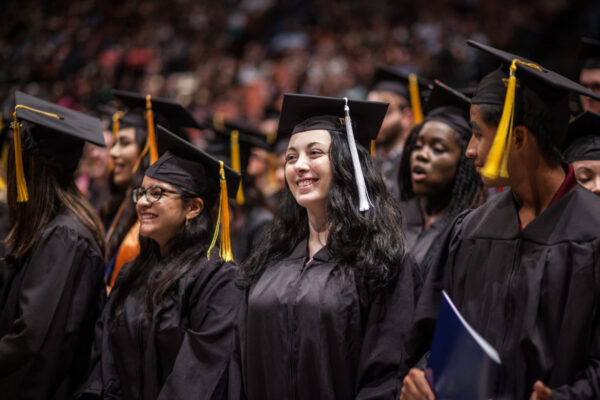ACE2019: Leading a Community During the Kavanaugh Hearings
When a Palo Alto University (CA) faculty member stepped forward and became embroiled in the confirmation hearings for Supreme Court Justice Brett Kavanaugh, the institution was pulled into a storm. On Sunday at ACE2019, three higher education leaders reflected on this journey and provided perspective to those gathered during the session “Through the Storm: Leading a Community During the Kavanaugh Hearings.”
Luoluo Hong, vice president for student affairs and enrollment management and Title IX coordinator at San Francisco State University, interviewed Palo Alto University President Maureen O’Connor and Vice President for Academic Affairs Risa Dickson, who shared these major takeaways from that experience:
Campus culture informed the official response.
Dickson and O’Connor agreed that the school’s mission helped inform response to the crisis.
Palo Alto University stands for public good and social justice, so in some ways there was pressure to say more about the topic. Dickson and O’Connor’s expertise in psychology helped them frame the manner in which they understood trauma, re-traumatization, and the triggers of trauma. Perhaps, they ventured, their expertise hindered them because they didn’t provide quite enough guidance to faculty on what to say in their classrooms.
Being an institution heavily rooted in science, they made sure to track the data they were receiving, pulling in a forensic specialist to analyze reactions to the issue.
And the horizontal structure of the leadership team heavily informed their response; there was no time to seek approval and many decisions were made on the spot. Luckily, the decisions were often the right ones. It was a new team, and crisis management is hard enough to do with a veteran team, they said. A workaround, O’Connor said, was checking in with the whole team every morning via Zoom: picking up from the day before, planning for the new day, looking into the next.
The vitriol they received in response to their colleague’s testimony was overwhelming.
Dickson and O’Connor received over 10,000 packages and pieces of mail that had to be handled by specially trained teams, in case of dangerous substances. After the testimony, the volume kicked up considerably.
O’Connor shared a tip: Have a plan for incoming email. Their plan, which was successful, was to have anyone who received relevant emails forward it to the campus external affairs team, who sorted it based on positive and negative content, then went from there.
The most painful aspect of communication was seeing social media play out, as it was incessant and could be ugly. Their advice to the crowd was to quickly figure out a strategy for managing it, like disallowing comments on their various platforms.
But so was the support.
Dickson and O’Connor emphasized that the support they received was moving and particularly surprising. One supporter even put up a billboard in solidarity with Palo Alto.
The local community, including the police, provided resources and support. Palo Alto also used outside counsel and mental health professionals.
O’Connor and Dickson described how faculty, staff, and students were concerned for their own safety at points, but that overwhelmingly, they trusted leadership to keep them safe. What helped was that communications let everyone feel like there were adults in the room handling everything, which allowed students to just keep being students.
Campus leaders need to remember to take care of themselves.
Hong asked Dickson and O’Connor how they took care of themselves during the crisis. Going off sheer adrenaline. Sleep. Seeing people eye to eye. Being transparent. Overall, they realized, they didn’t make conscious efforts to take care.
O’Connor said that feeling connected to the community was the one aspect that helped the most.
—Kristen Carmen
If you have any questions or comments about this blog post, please contact us.


